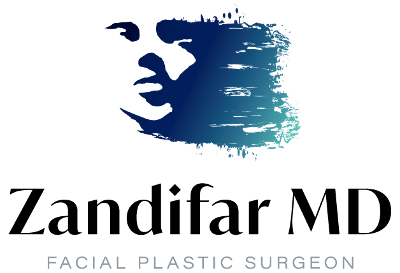What makes a face beautiful? Is it symmetry, proportion, or something more elusive—something deeply rooted in how our brains are wired to respond?
For centuries, beauty was thought to be purely subjective or based on shifting cultural trends. But recent advances in neuroscience have revealed something extraordinary: our brains are not only wired to detect beauty but also to feel it, process it, and respond to it in measurable ways.
This fascinating intersection of brain science and aesthetics is known as neuroaesthetics, and it’s beginning to revolutionize the field of plastic surgery. At ZandifarMD.com, Dr. Hootan Zandifar, a double board-certified facial plastic surgeon, embraces this emerging science to guide more personalized, patient-centered approaches to facial enhancement.
In this blog, we’ll explore how neuroaesthetics works, what it reveals about our perceptions of beauty, and how it’s influencing real-world surgical decisions.
What Is Neuroaesthetics?
Neuroaesthetics is the study of how the human brain perceives and processes aesthetic experiences—including art, music, and facial beauty. Using tools like functional MRI (fMRI), researchers have discovered that certain facial features consistently activate the brain’s reward centers, especially the orbitofrontal cortex—an area linked to pleasure, decision-making, and emotional evaluation.
In simpler terms: our brains respond to beautiful faces the same way they respond to chocolate, music, or a warm embrace.
This science isn’t just academic—it has practical applications in how facial plastic surgeons plan, customize, and evaluate aesthetic procedures.
Beauty Is Both Universal and Personal
While cultural influences certainly play a role in beauty standards, neuroaesthetic research shows that some preferences are hardwired into the brain. These include:
- Symmetry: Balanced facial features are processed more fluently by the brain, creating a sense of harmony.
- Golden Ratios: Certain facial proportions—like the distance between the eyes or the ratio of the lips to the chin—correlate with perceived attractiveness across many cultures.
- Averageness: Faces that reflect an average of many facial types often appear more “familiar” and thus more attractive.
But Dr. Zandifar cautions that true beauty goes beyond math.
“Neuroaesthetics helps us understand what draws the eye, but as surgeons, our role is to understand what draws the heart—what makes each patient feel confident, authentic, and empowered.”
That’s why combining scientific insights with personal storytelling and patient goals is essential in modern facial surgery.
How Brain Science Is Changing Plastic Surgery Consultations
Understanding how the brain responds to facial features allows surgeons to approach facial aesthetics with more precision and empathy. At ZandifarMD, neuroaesthetic principles are used to help:
1. Create Natural-Looking Results
By aligning procedures with the brain’s innate preferences—such as facial harmony and subtle transitions—Dr. Zandifar is able to deliver results that not only look good but feel right to others. This is especially important in procedures like rhinoplasty, where even small changes can alter facial balance.
2. Avoid the “Uncanny Valley” Effect
Overdone cosmetic procedures can sometimes result in a face that looks “off” without being obviously wrong. This often stems from breaking neuroaesthetic cues that signal familiarity and emotional warmth. Using brain-based insights helps prevent outcomes that may be technically correct but emotionally jarring.
3. Customize Enhancements Based on Individual Wiring
Not all patients respond to facial changes the same way. Neuroaesthetics reminds us that perception is both biological and personal. Dr. Zandifar takes time to understand what you find beautiful—and why—so surgical plans are as emotionally satisfying as they are physically transformative.
The Brain’s Role in Self-Perception
It’s not just how others see us—it’s how we see ourselves.
Research has shown that looking at our own reflection activates the same pleasure centers in the brain that are stimulated by external beauty. When patients undergo procedures that enhance their self-perception, the brain reinforces this with feelings of confidence, calm, and even reduced anxiety.
This is why facial surgery, when approached thoughtfully, can have psychological benefits well beyond appearance.
“We’re not just reshaping noses or lifting skin,” says Dr. Zandifar. “We’re helping people align their inner sense of self with their outward identity.”
From Neuroscience to the Operating Room
So how do these insights translate into real procedures?
At ZandifarMD, neuroaesthetic principles are often used in:
- Facial balancing procedures that adjust proportions across multiple features (not just one)
- Non-surgical enhancements using fillers or Botox to subtly restore symmetry and youthfulness
- Reconstructive surgery where emotional recognition cues—like the curvature of the lips or eyelids—are essential to natural expression
- Aging simulations that help patients understand how their features will evolve over time, using data-backed modeling
By focusing on the brain’s emotional response—not just surface metrics—Dr. Zandifar delivers results that are intuitive, not just aesthetic.
Why This Matters in Today’s Beauty Culture
In an age of filters, augmented selfies, and aesthetic trends, many people struggle with an internal sense of what looks “right.” Neuroaesthetics brings us back to the human core of beauty—reminding us that true attractiveness isn’t about perfection, but about emotional connection, balance, and authenticity.
Plastic surgery guided by brain science doesn’t chase fads—it restores the deeper, quieter harmony that your brain already knows how to recognize.
Conclusion:
Neuroaesthetics is giving facial plastic surgery a powerful new lens—one that blends emotional insight with surgical precision. By understanding how the brain responds to faces, Dr. Zandifar is able to craft enhancements that not only look beautiful—but also feel emotionally resonant to both the patient and those around them.
If you’re considering facial surgery or non-surgical aesthetic care, don’t rely on trends or guesswork.
Let your brain—and an expert surgeon—guide you.
Schedule a consultation today at ZandifarMD.com and discover how science-backed beauty can feel as natural as it looks.
Because real beauty isn’t just seen. It’s felt.

